Abstract
Physiology is an important biological science; but behavior analysis is not a biological science, and behavior analysts can safely ignore biological processes. However, ignoring products of biological processes might be a serious mistake. The important products include behavior, instinctive drift, behavior potentials, hunger, and many developmental milestones and events. Physiology deals with the sources of such products; behavior analysis can deal with how the products affect behavior, which can be understood without understanding their sources.
Keywords: behavior analysis, developmental milestones, developmental events, physiological processes, physiological products, physiology
Full text
PDF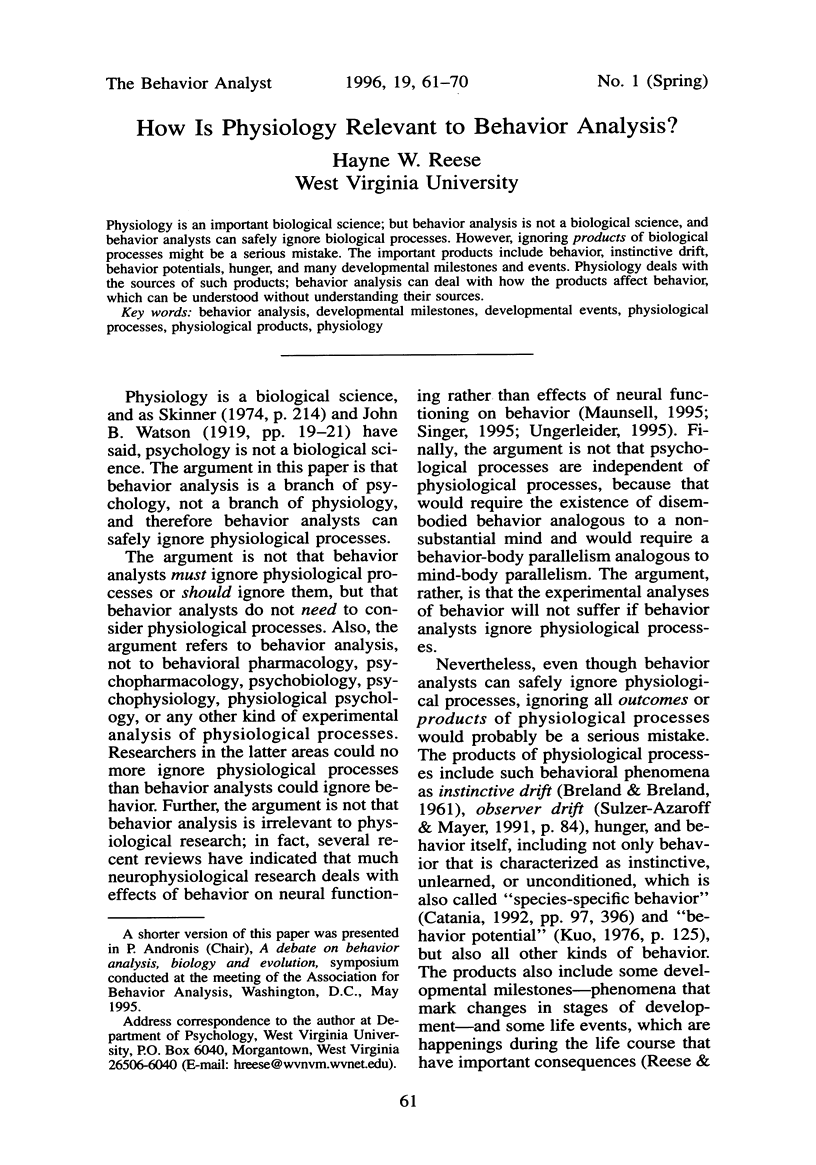
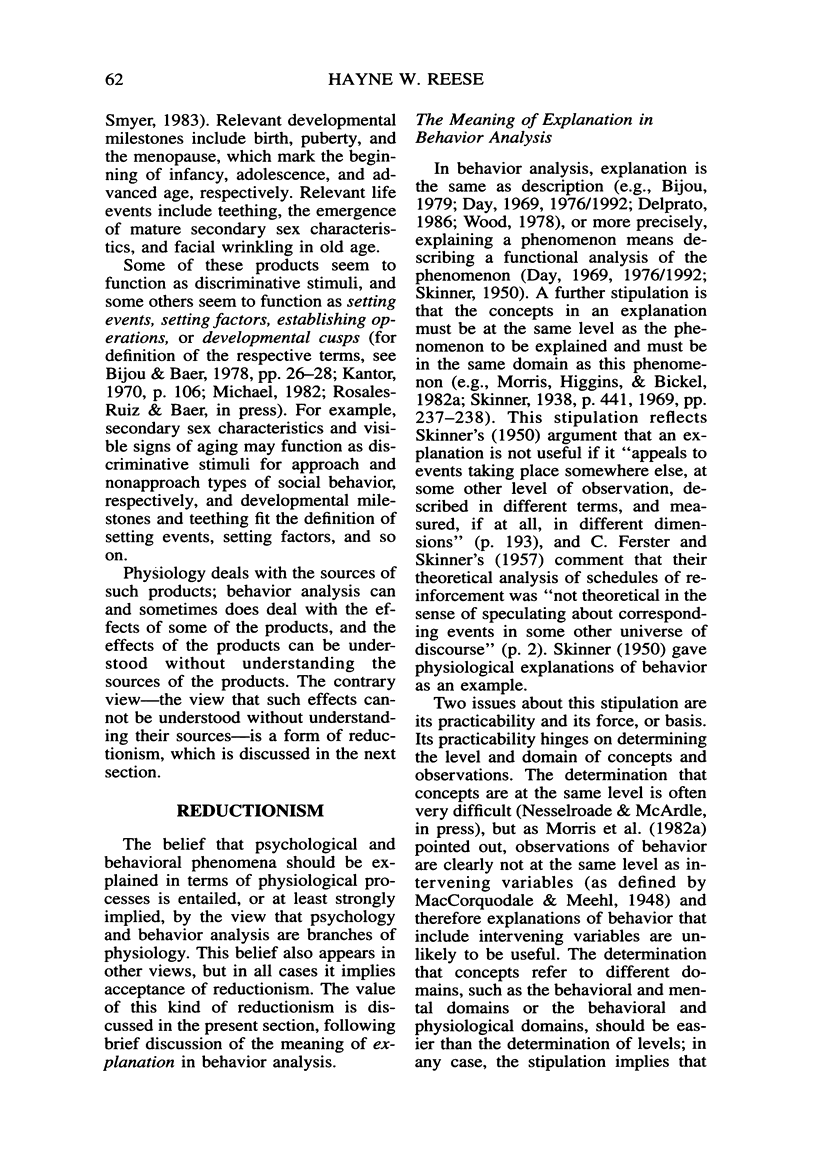
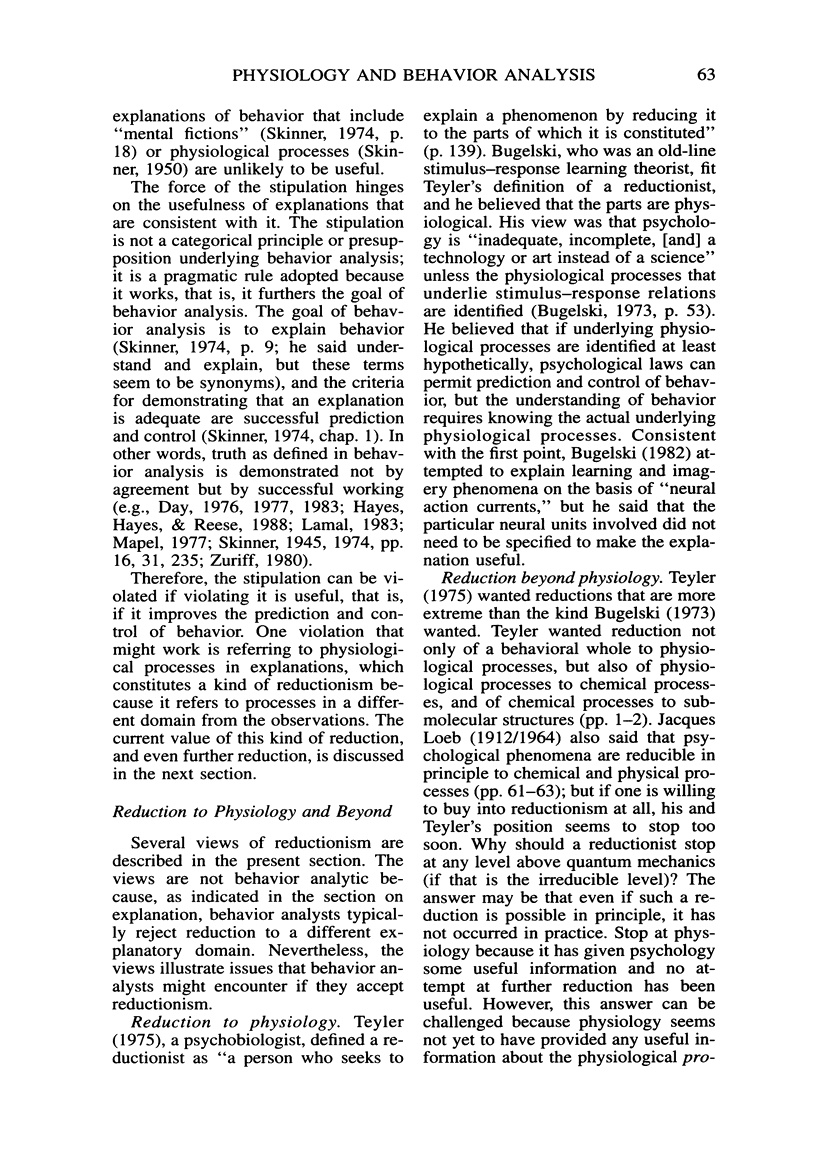
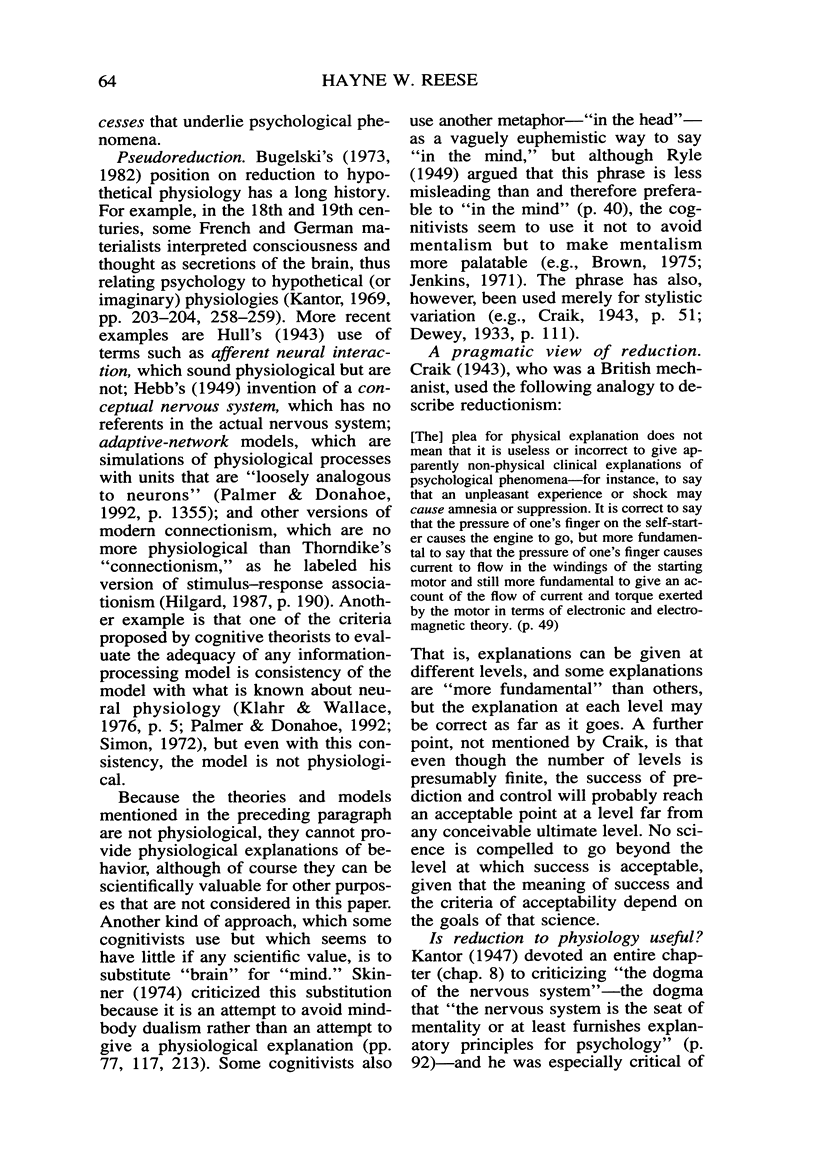
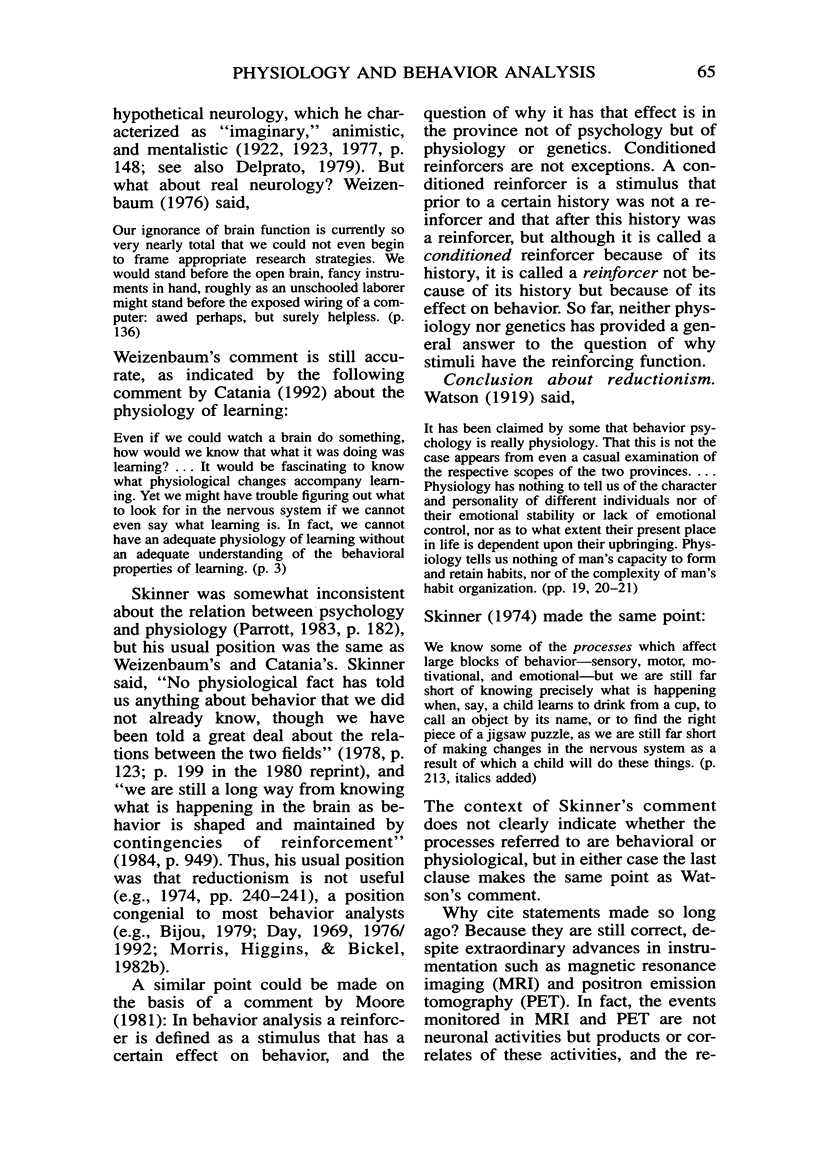
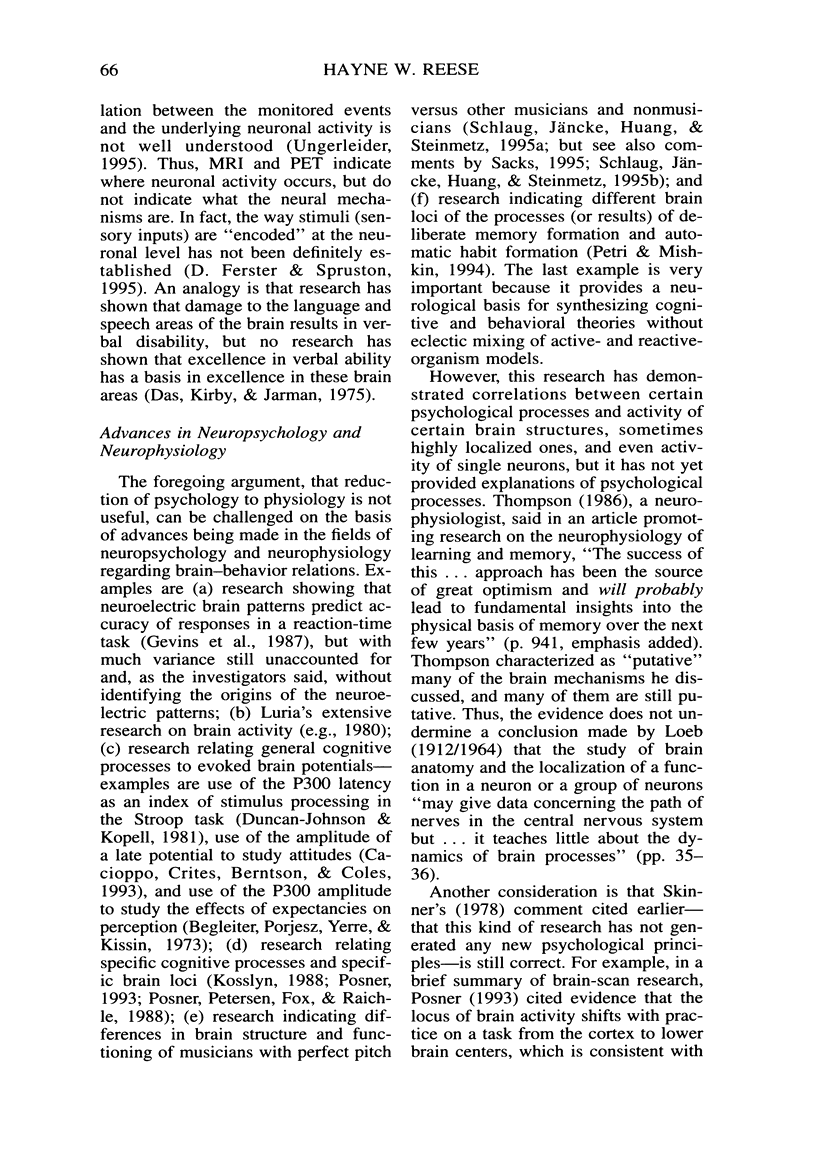
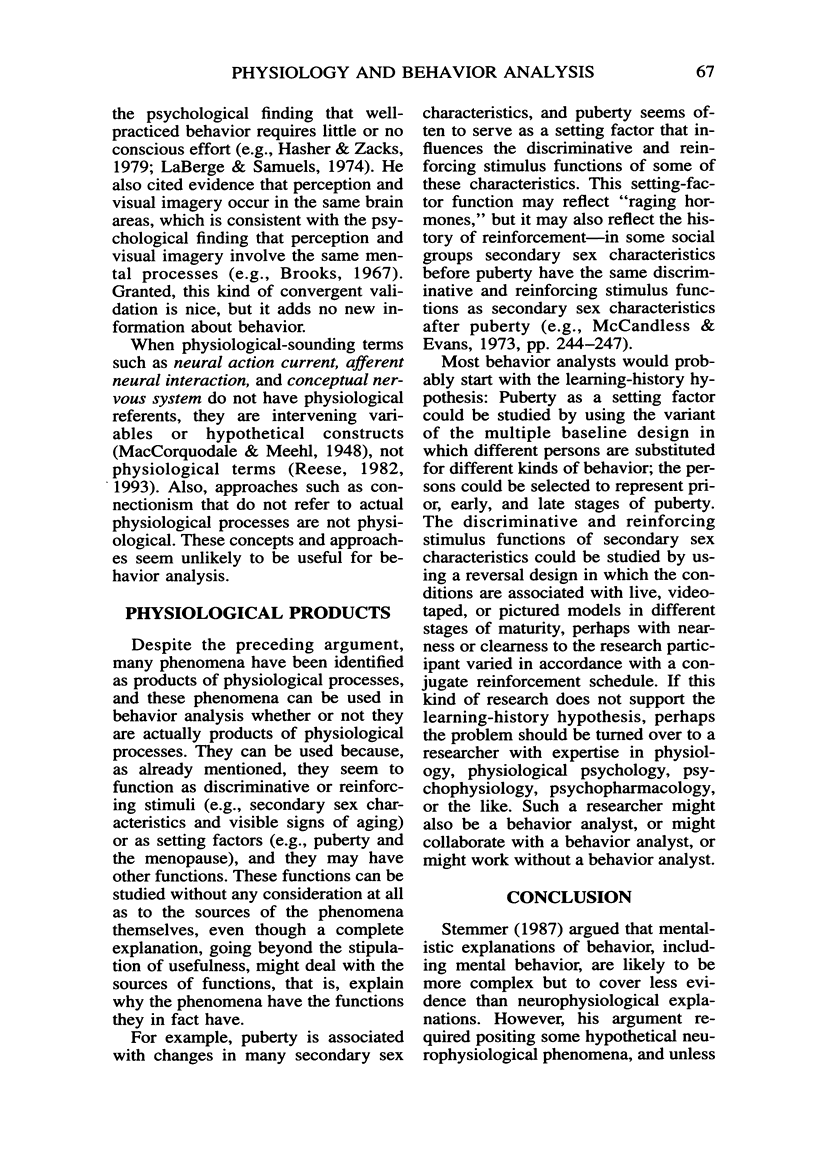
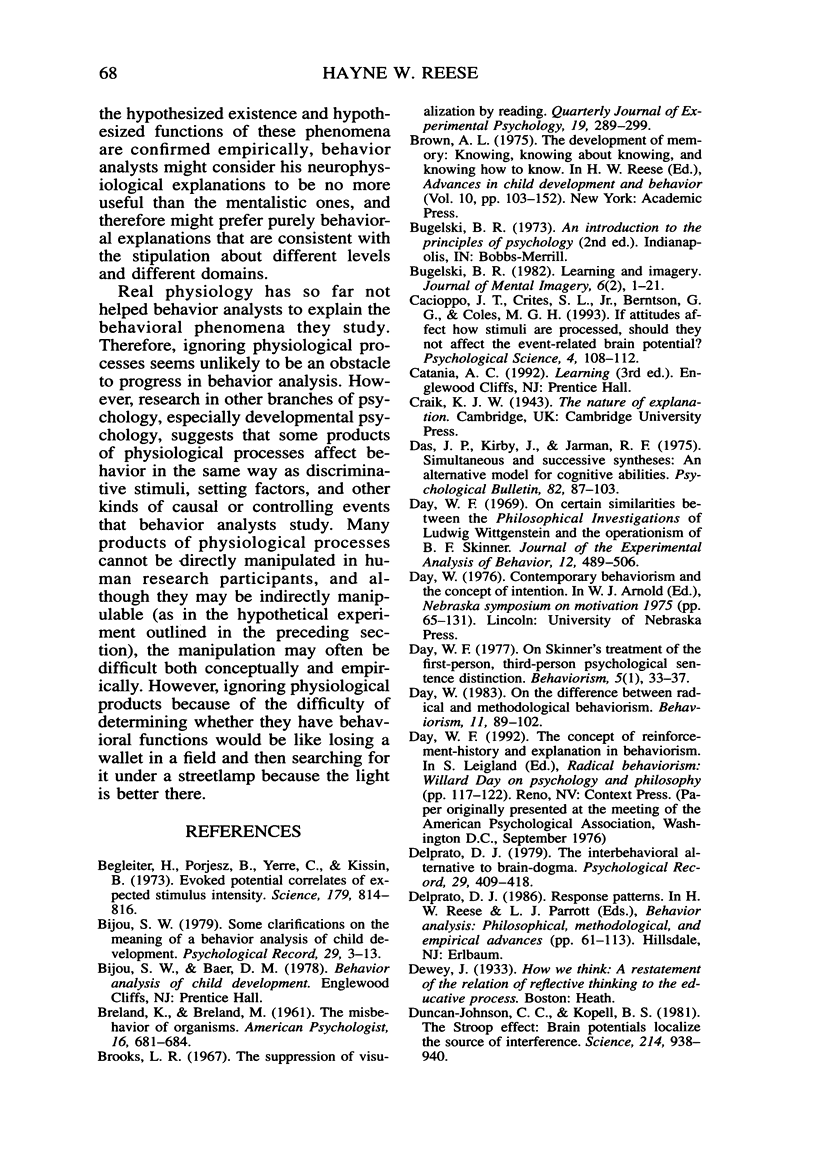
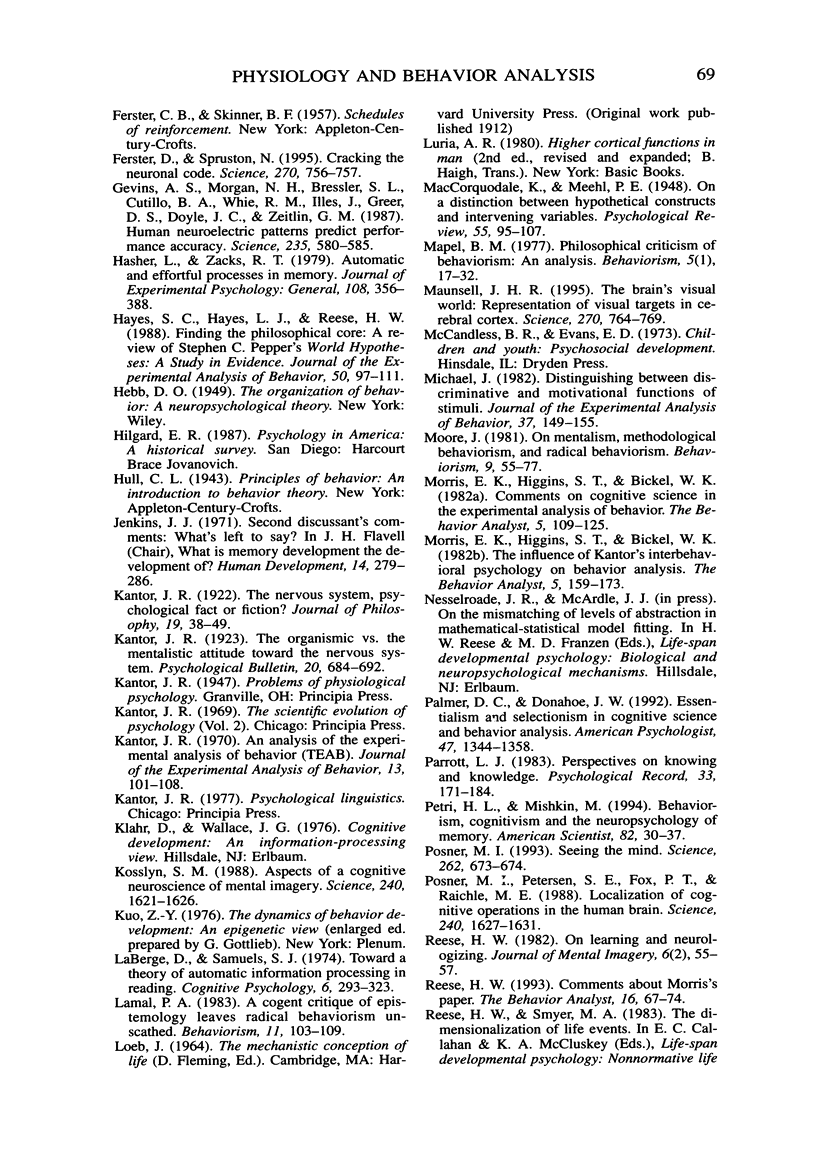
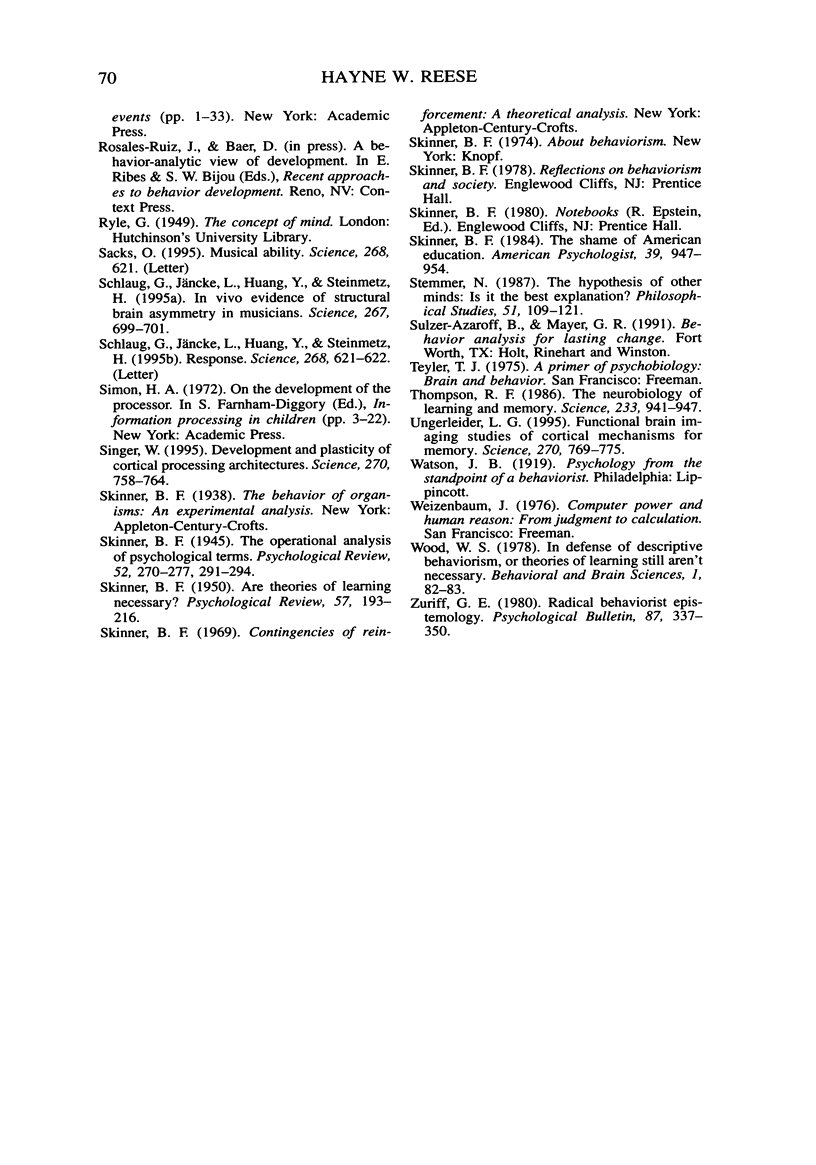
Selected References
These references are in PubMed. This may not be the complete list of references from this article.
- Begleiter H., Porjesz B., Yerre C., Kissin B. Evoked potential correlates of expected stimulus intensity. Science. 1973 Feb 23;179(4075):814–816. doi: 10.1126/science.179.4075.814. [DOI] [PubMed] [Google Scholar]
- Brooks L. R. The suppression of visualization by reading. Q J Exp Psychol. 1967 Nov;19(4):289–299. doi: 10.1080/14640746708400105. [DOI] [PubMed] [Google Scholar]
- Day W. Contemporary behaviorism and the concept of intention. Nebr Symp Motiv. 1975;23:65–131. [PubMed] [Google Scholar]
- Duncan-Johnson C. C., Kopell B. S. The Stroop effect: brain potentials localize the source of interference. Science. 1981 Nov 20;214(4523):938–940. doi: 10.1126/science.7302571. [DOI] [PubMed] [Google Scholar]
- Ferster D., Spruston N. Cracking the neuronal code. Science. 1995 Nov 3;270(5237):756–757. doi: 10.1126/science.270.5237.756. [DOI] [PubMed] [Google Scholar]
- Gevins A. S., Morgan N. H., Bressler S. L., Cutillo B. A., White R. M., Illes J., Greer D. S., Doyle J. C., Zeitlin G. M. Human neuroelectric patterns predict performance accuracy. Science. 1987 Jan 30;235(4788):580–585. doi: 10.1126/science.3810158. [DOI] [PubMed] [Google Scholar]
- Hayes S. C., Hayes L. J., Reese H. W. Finding the philosophical core: A review of Stephen C. Pepper's World Hypotheses: A Study in Evidence. J Exp Anal Behav. 1988 Jul;50(1):97–111. doi: 10.1901/jeab.1988.50-97. [DOI] [PMC free article] [PubMed] [Google Scholar]
- Kantor J. R. An analysis of the experimental analysis of behavior (TEAB). J Exp Anal Behav. 1970 Jan;13(1):101–108. doi: 10.1901/jeab.1970.13-101. [DOI] [PMC free article] [PubMed] [Google Scholar]
- Kosslyn S. M. Aspects of a cognitive neuroscience of mental imagery. Science. 1988 Jun 17;240(4859):1621–1626. doi: 10.1126/science.3289115. [DOI] [PubMed] [Google Scholar]
- MACCORQUODALE K., MEEHL P. E. On a distinction between hypothetical constructs and intervening variables. Psychol Rev. 1948 Mar;55(2):95–107. doi: 10.1037/h0056029. [DOI] [PubMed] [Google Scholar]
- Maunsell J. H. The brain's visual world: representation of visual targets in cerebral cortex. Science. 1995 Nov 3;270(5237):764–769. doi: 10.1126/science.270.5237.764. [DOI] [PubMed] [Google Scholar]
- Michael J. Distinguishing between discriminative and motivational functions of stimuli. J Exp Anal Behav. 1982 Jan;37(1):149–155. doi: 10.1901/jeab.1982.37-149. [DOI] [PMC free article] [PubMed] [Google Scholar]
- Morris E. K., Higgins S. T., Bickel W. K. Comments on cognitive science in the experimental analysis of behavior. Behav Anal. 1982 Fall;5(2):109–125. doi: 10.1007/BF03392380. [DOI] [PMC free article] [PubMed] [Google Scholar]
- Morris E. K., Higgins S. T., Bickel W. K. The influence of Kantor's interbehavioral psychology on behavior analysis. Behav Anal. 1982 Fall;5(2):159–173. doi: 10.1007/BF03392384. [DOI] [PMC free article] [PubMed] [Google Scholar]
- doi: 10.1901/jeab.1969.12-489. [DOI] [PMC free article] [Google Scholar]
- Palmer D. C., Donahoe J. W. Essentialism and selectionism in cognitive science and behavior analysis. Am Psychol. 1992 Nov;47(11):1344–1358. doi: 10.1037//0003-066x.47.11.1344. [DOI] [PubMed] [Google Scholar]
- Posner M. I., Petersen S. E., Fox P. T., Raichle M. E. Localization of cognitive operations in the human brain. Science. 1988 Jun 17;240(4859):1627–1631. doi: 10.1126/science.3289116. [DOI] [PubMed] [Google Scholar]
- Posner M. I. Seeing the mind. Science. 1993 Oct 29;262(5134):673–674. doi: 10.1126/science.8235585. [DOI] [PubMed] [Google Scholar]
- Reese H. W. Comments about Morris's paper. Behav Anal. 1993 Spring;16(1):67–74. doi: 10.1007/BF03392612. [DOI] [PMC free article] [PubMed] [Google Scholar]
- SKINNER B. F. Are theories of learning necessary? Psychol Rev. 1950 Jul;57(4):193–216. doi: 10.1037/h0054367. [DOI] [PubMed] [Google Scholar]
- Sacks O. Musical ability. Science. 1995 May 5;268(5211):621–622. doi: 10.1126/science.7732360. [DOI] [PubMed] [Google Scholar]
- Schlaug G., Jäncke L., Huang Y., Steinmetz H. In vivo evidence of structural brain asymmetry in musicians. Science. 1995 Feb 3;267(5198):699–701. doi: 10.1126/science.7839149. [DOI] [PubMed] [Google Scholar]
- Singer W. Development and plasticity of cortical processing architectures. Science. 1995 Nov 3;270(5237):758–764. doi: 10.1126/science.270.5237.758. [DOI] [PubMed] [Google Scholar]
- Thompson R. F. The neurobiology of learning and memory. Science. 1986 Aug 29;233(4767):941–947. doi: 10.1126/science.3738519. [DOI] [PubMed] [Google Scholar]
- Ungerleider L. G. Functional brain imaging studies of cortical mechanisms for memory. Science. 1995 Nov 3;270(5237):769–775. doi: 10.1126/science.270.5237.769. [DOI] [PubMed] [Google Scholar]


